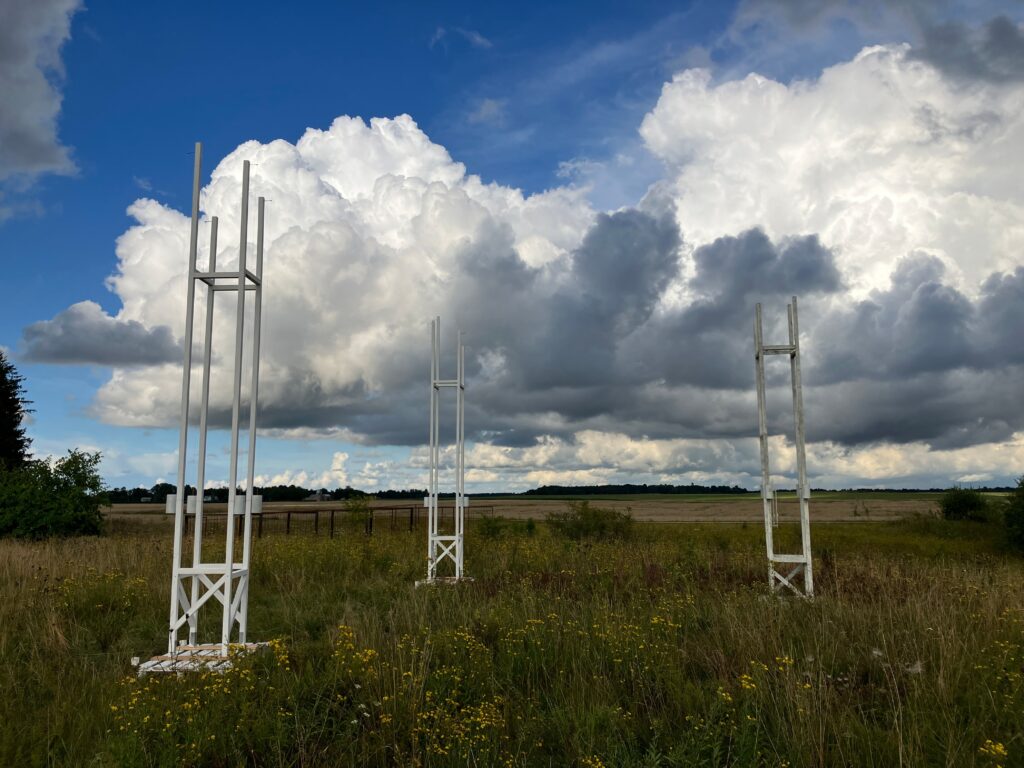
John Grzinich (born 1970) is a sound and audiovisual artist from the United States who lives and works in Estonia. Since the 1990s, he has been creating sound works, moving images, and site-specific installations; approaching listening as a way to rethink human-centred perceptions of the world. Grzinich has been actively engaged in the Estonian art scene since the early 2000s and is regarded as one of the country’s leading sound artists.
Sound as a means of perceiving space is a central theme in Grzinich’s work. In one of his earlier projects, “New Maps of Time” (2008–2012), he explored how sound can represent mental, urban, and natural environments. His urban research in cities such as Istanbul, Prague, and Calgary focused on site-specific and collective listening, framing the spatial experience of sound as a subjective and socially shared creative process.
The relationship between sound and space has also played a defining role in Grzinich’s more recent work. During an international art residency in Japan, he created the installation “Water Voices” (2017), in which he made the micro-movements of water audible. The installation consisted of eight bamboo tubes placed in a mountain stream, with one end capturing the flow of water and the other directing the sound to the listener’s ear. The artist used no electricity or amplification – the sound emerged solely through the interaction between nature and the listener.
John Grzinich’s 2018 sound installation “Resonant Geometry” consisted of tensioned instrument strings placed in the landscape, functioning as sound generators and acoustically representing the structure of space. The spatial experience emerged through the interaction between the landscape, sound, and the tensioned strings. The installation was first presented in Greece at the site of ancient Mycenae during the sound art festival Tuned City, and later near the Plasy Monastery in the Czech Republic.
The long-running project “Geofractions,” which began in 2009, is one of Grzinich’s most ambitious works. The artist started by researching the industrial landscapes of Ida-Viru County in northeastern Estonia, focusing on the invisible or hard-to-perceive changes brought about by mining and energy production. Grzinich recorded sounds in mines, factories, and along the edges of waste fields, aiming to reveal transformations in the landscape that might go unnoticed visually but could be heard. At the heart of the work is a 100-minute sound composition, with each minute representing one year in the history of Estonia’s oil shale industry, starting from 1921.
“Geofractions” has been exhibited in various forms. In 2021, during the exhibition “Adapting to Decline” at the Mining Museum in Kohtla-Nõmme, the work was presented as an installation centred around a hand-drawn map of Ida-Viru County, placed atop an image of an oil shale layer and integrated with sound equipment. Using speakers and amplifiers, the installation brought to life the deeper layers of the earth – sound seemed to emerge from underground. In 2023, the project took the form of a participatory performance at Kanuti Gildi SAAL as part of the “Üle Heli: Spherical Evening” series, with an evolved version titled “Audioswarm.” Sound was distributed throughout the space via mobile devices, and the audience was invited to share their listening experiences. Grzinich applied a similar approach in 2025 at the Kumu Art Museum exhibition “They Began to Speak.” During the opening performance “Audioswarm: Geofractions,” infrasound and low frequencies were used to create a physically perceptible sound field – an atmosphere in which the body itself became part of the work.
John Grzinich explored the collective listening experience further in the participatory performance “Audioswarm: La Paz,” which he presented in 2022 at the Sonandes Sound Art Biennial in Bolivia. The performance took place in a theatre, where around 50 participants simultaneously played the same audio file on their phones and began moving around the space. Together, they formed a shared sonic body that existed until the last participant came to a stop – until the moment silence arrived.
At the 2023 Sequences Art Biennial “Can’t See” in Reykjavík, John Grzinich presented the installation “Powerless Flight,” which focused on making natural forces audible. The work consisted of two aeolian harps whose strings were played by the wind. The installation is now part of the permanent collection at the Vaskjala Residency. As in many of his earlier works, Grzinich sought to reveal what surrounds us but usually remains invisible to the eye.
John Grzinich studied architecture at the University of Kansas and has participated in several artist residencies, including Mustarinda in Finland (2019), Tsukuba in Japan (2017), and the Skálar programme in Iceland (2016). He has been one of the driving forces behind the Mooste Guest Studio (MoKS), and has taught at the Estonian Academy of Arts. Grzinich has participated in numerous international exhibitions and festivals, with his works shown throughout Europe, North and South America, and Japan.